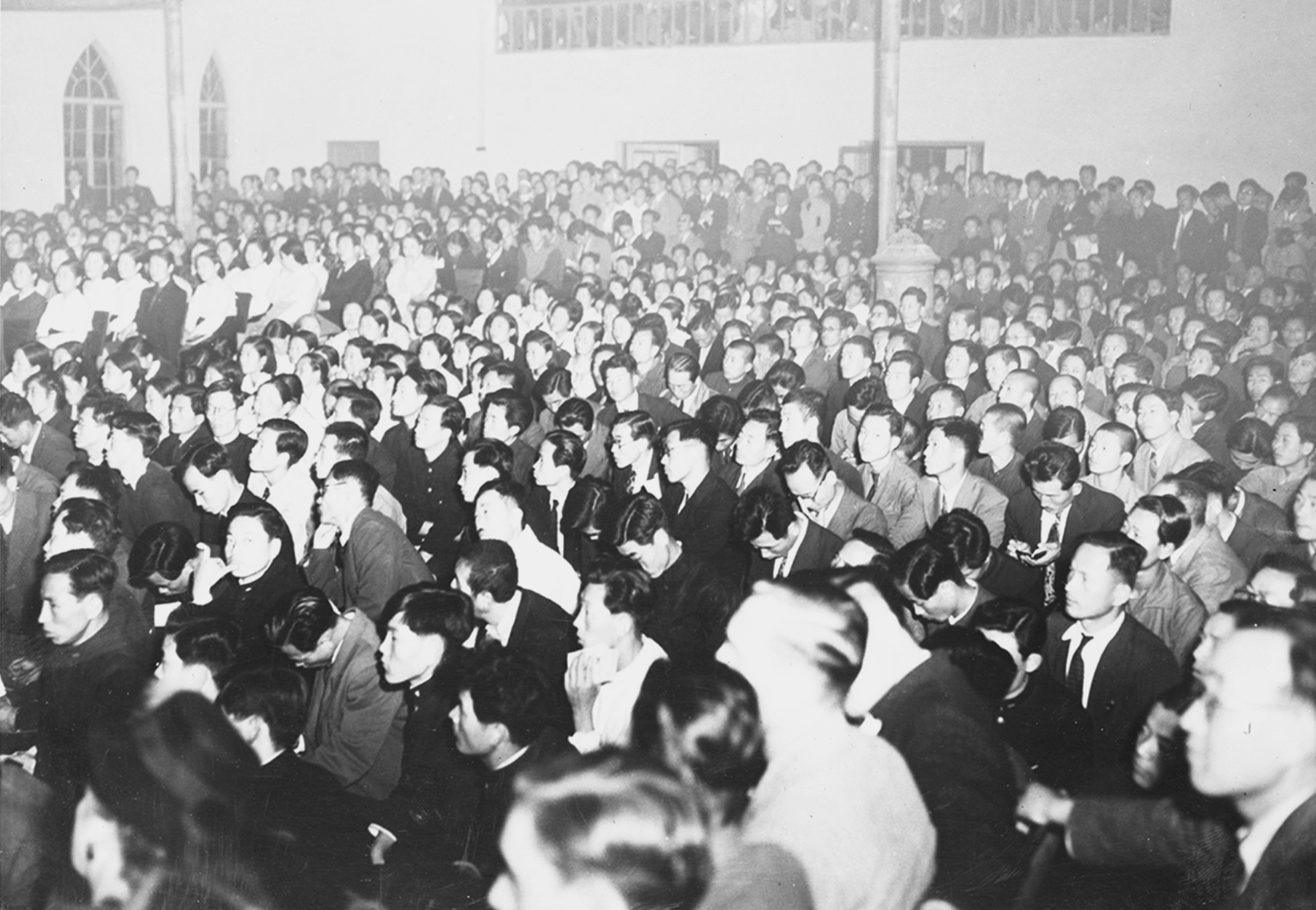
Forks of the Brandywine Presbyterian Church, Glenmoore, Pennsylvania, session records pertaining to the death of the congregation’s pastor, the Rev. John Carmichael, November 15, 1785. Pearl: 69927
The Forks of the Brandywine Church, founded in 1735 and an eventual member of Presbyterian Church in the U.S.A. (Old School), met in a log meetinghouse that had been built at the church site the year before. A stone church building replaced the log structure in 1761, the same year that the Rev. John Carmichael took charge of the pastorate. The timelines of the church building and its pastor are intertwined in a bittersweet fashion: they began their journeys in the same year, and their journeys concluded in the same year. The year 1785 saw the death of Carmichael as well as the demolition of the church building by fire.
The image above is just one glimpse at a collection of papers pertaining to the death of Carmichael on November 15, 1785. The papers include handwritten entries about him by members of his congregation. The introductory page reads, “A loving mourning freind and relation would here inscribe there grateful memories. He was a flameing Ministor and a faithful, witness for Christ. He delighted much, to use the gifts and strength he received in his Master’s Service. He grately lamented, and bewailed the torrent, of abounding vice since the America war; and longed much, for the return of the, Holy Spirit to the Churches.”
Carmichael was called the “Revolutionary Pastor,” a nickname earned through his efforts to recruit soldiers during the Revolutionary War, and was also said to have been a counselor of General George Washington. The Rev. Nathan Grier was his successor at Forks of the Brandywine. The church building was restored in 1787 thanks to generous gifts from donors such as Benjamin Franklin, Benjamin Rush and David Rittenhouse.

A thousand youth at the Presbyterian youth conference listening to Dr. John A. Mackay’s address, November 1949. Pearl: 146117
In November 1949, over 1,000 young adults gathered at the Presbyterian Youth Conference to hear Dr. John A. Mackay deliver a keynote address.
The Scottish-born Mackay (1889-1983) was a prominent Presbyterian, serving the church throughout his life as a theologian, missionary and educator. He enrolled at Princeton Theological Seminary in 1913, crossing the Atlantic to pursue his studies. Upon his graduation two years later, he traveled to Madrid, Spain, to continue his education and prepare for work as a missionary to Latin America.
From 1916, when he helped to establish a mission school in Lima, Peru, until 1936, Mackay traveled widely throughout Latin America, working as a teacher before focusing his energy on evangelistic speaking. He left the foreign mission field to accept a call from his alma mater, Princeton Theological Seminary, in 1936. Mackay became the third president of the institution. He remained there, as both president and teacher, until 1959.
As a charismatic preacher and educator, Mackay was often asked to speak at conferences, assemblies and other gatherings— like the Presbyterian Youth Conference in November 1949. At this time, Mackay was also serving as the president of the Presbyterian Board of Foreign Missions, a position he held until 1951. The same year that he spoke at the Youth Conference, Mackay also traveled to the Eastern Asia Christian Conference in Bangkok for another speaking opportunity.

Black Presbyterians United Annual Fellowship Dinner, November 13, 1981. Pearl: 305988
On November 13, 1981, Black Presbyterians United (BPU) celebrated its 13th annual fellowship dinner in Detroit. The Rev. Dr. Katie Geneva Cannon was the guest speaker at the event. One of the earlier pages of the program for the evening carries an inscription that highlights the goal of the BPU, as offered by the Michigan chapter:
"It is the purpose of Black Presbyterian United to use its influence and power to achieve full and equal participation by Black Presbyterians in the United Presbyterian Church. We exist as an organization because we want the church to take seriously its calling to ministry with Blacks in all the world."
Prior to the founding of Black Presbyterians United in 1968, there was no national gathering of Black Presbyterians. In previous years, African American Presbyterian ministers had gathered together in caucuses, reaching back as early as 1856. The creation of the BPU, a turning point in the history of Black Presbyterianism, was brought about by Clarence Cave, Thelma Adair and other prominent Black Presbyterian leaders who thought that such a group was needed within the white-majority denomination. Thelma Adair would eventually serve as president of the Caucus in 1975.
Following Reunion in 1983, BPU became the NBPC, or National Black Presbyterian Caucus. The NBPC website shares the mission of the Caucus today: “to serve Jesus Christ, and enrich the Black Presbyterian congregations and their communities, through our commitment to congregational enhancement, advocacy, social and racial justice; and challenging the Presbyterian Church (U.S.A.) when it fails to take seriously the needs of the poor, oppressed, and disenfranchised.”
Want to learn more about the national archives of the PC(USA)? Get to know PHS!
